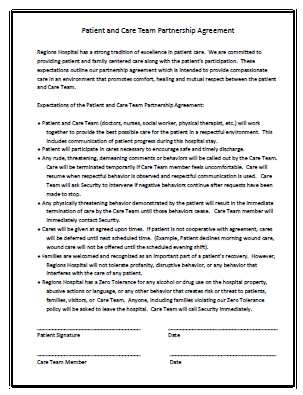We’ve all taken care of them. The nasty patient. Sure, trauma can ruin one’s day. And a person can’t be expected to be on their best behavior after, say, a major car crash. But after the dust settles and the patient is recovering, we sometimes get a glimpse of their real personality. And sometimes, it turns out, they are just not really that nice.
Most patients don’t realize that being nasty to their caregivers creates problems for themselves. Yes, we are trauma professionals, and we should be able to take care of anybody, anytime, under any circumstances. But human nature is what it is. We unconsciously try to minimize discomfort. And this may mean unconsciously reducing cares and interpersonal communication with the offensive individual.
The most important thing we can do is to make sure that the patient is aware that their behavior is not acceptable, and to set strict limits. A tight feedback loop is important. Equally as important, every provider needs to have the same limits, so the patient can’t play them against each other, trying to manipulate the system. Often times, the mere fact that the patient knows that the entire team has a uniform set of limits and expectations can help shape their behavior. This lets them recover as quickly as possible, and get out of the hospital at the earliest opportunity.
How can we accomplish this? Our hospital has developed a sort of “behavioral contract” that is provided to potential problem patients (and their visitors/families) to shape behavior before it has a chance to deteriorate. Nurses and/or doctors review the contract with the patient, explaining each point. They are them asked to sign, but even if they refuse, they are told they are still bound by it. Every trauma professional involved knows the limits so there is no room for manipulation. Here’s a copy of ours:
Have a look at our behavioral contract, and let me know your thoughts, or share the tools and tips you use to deal with this issue.





